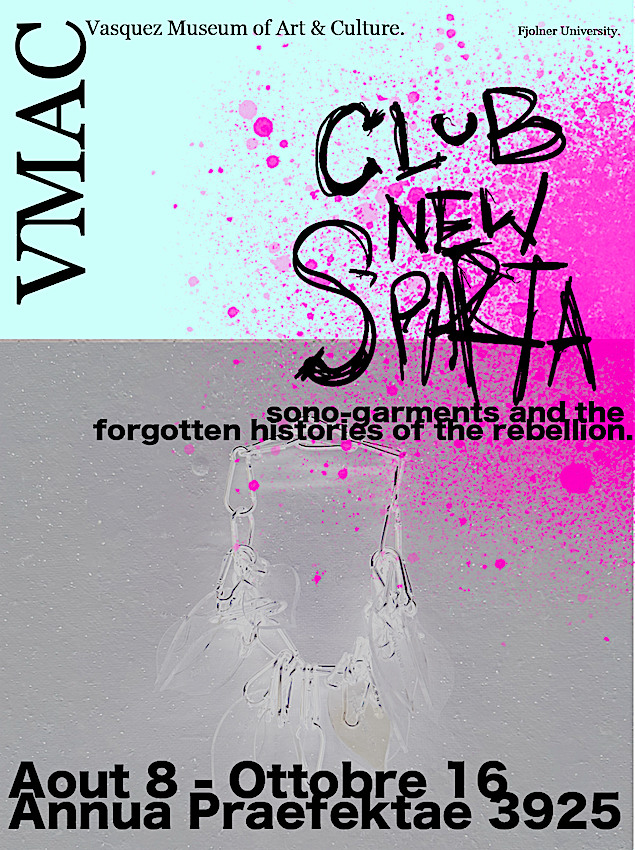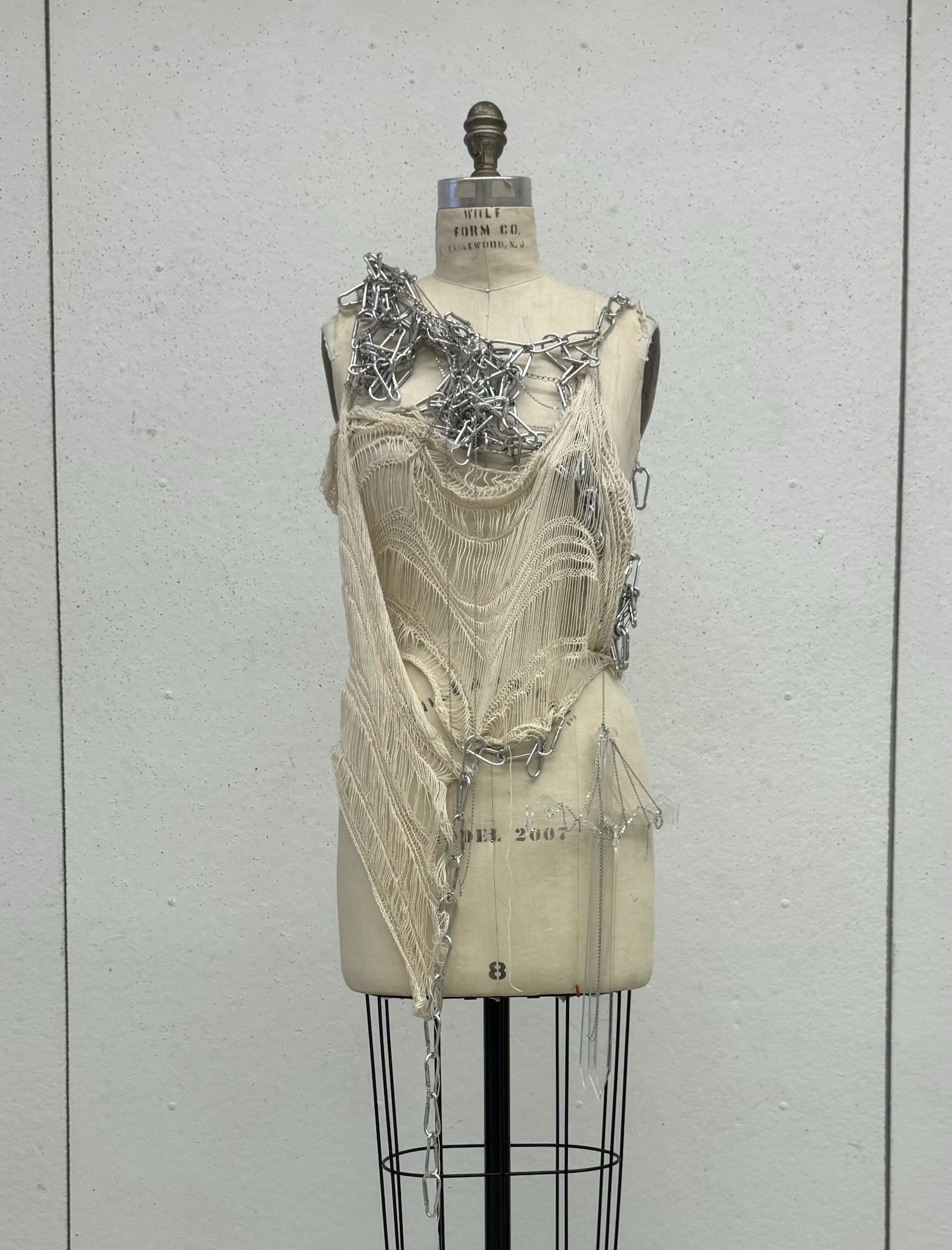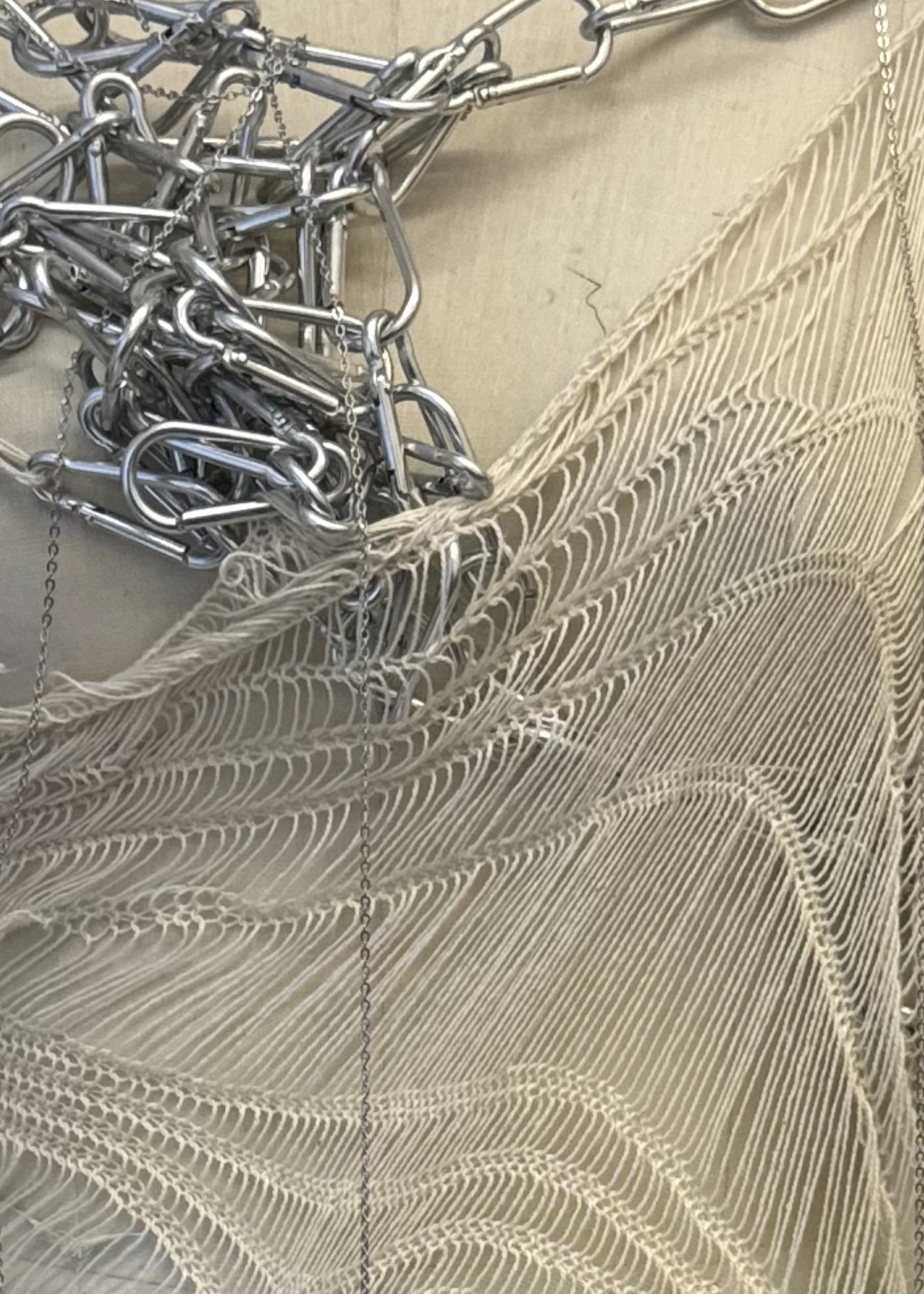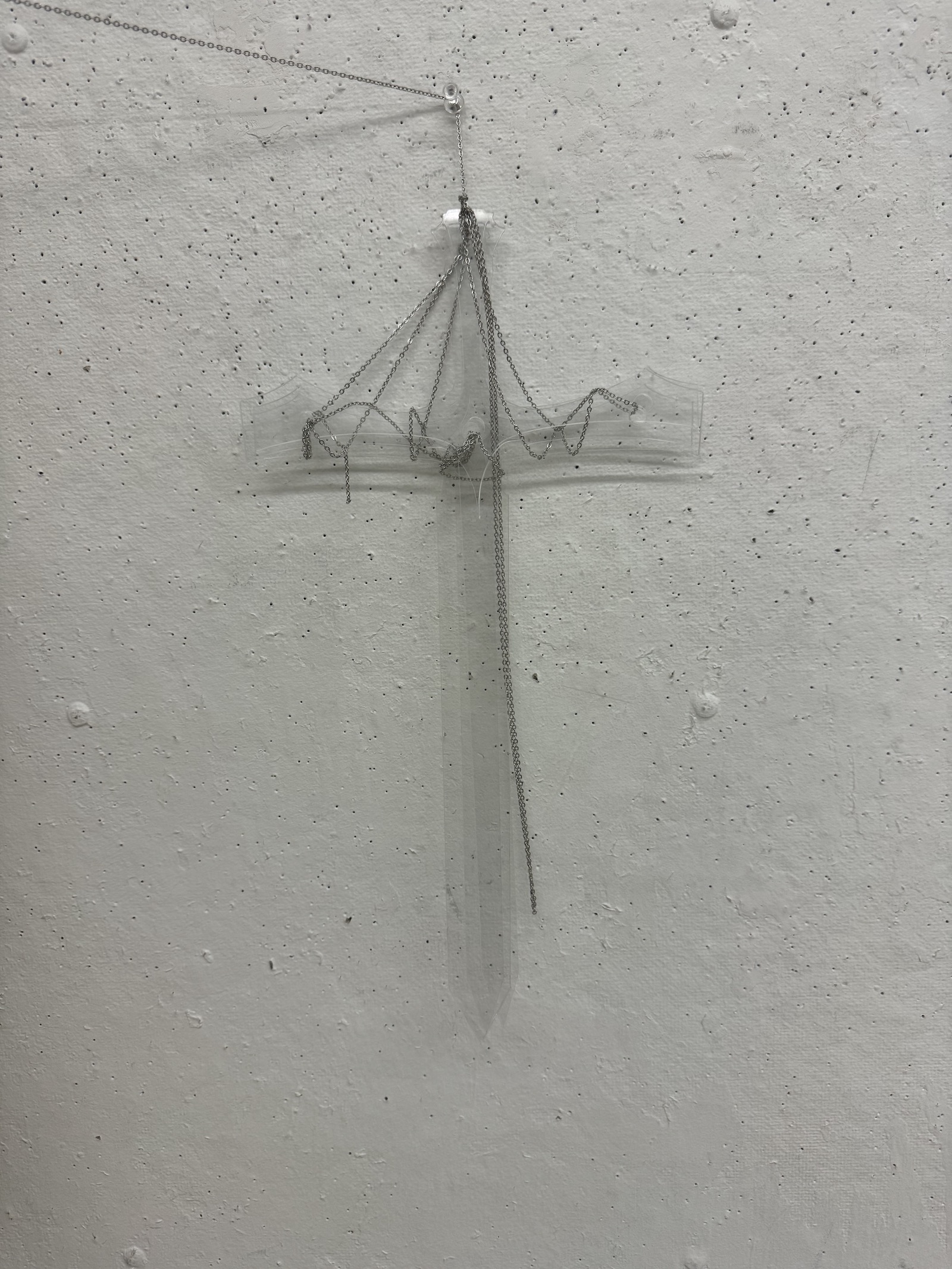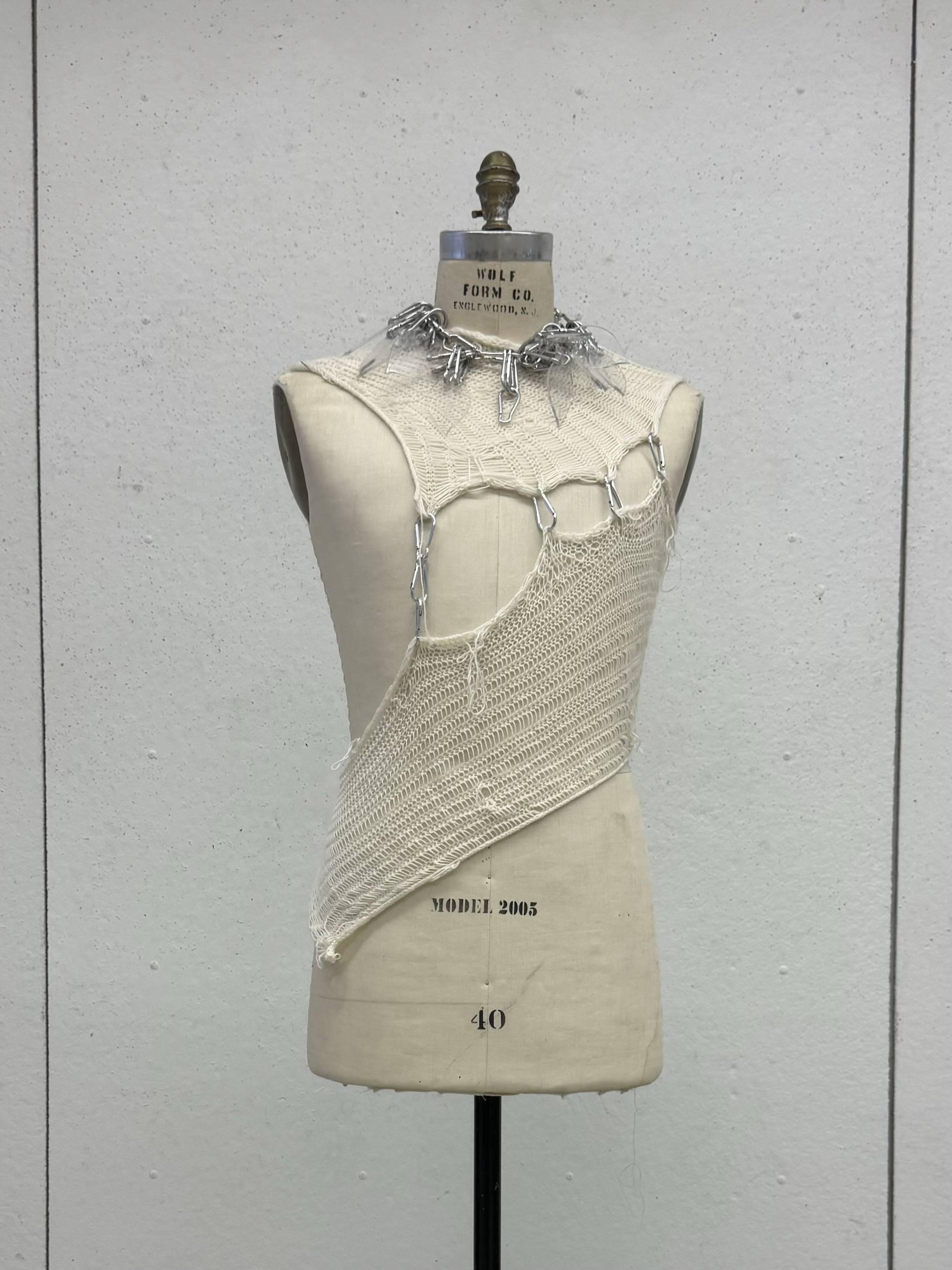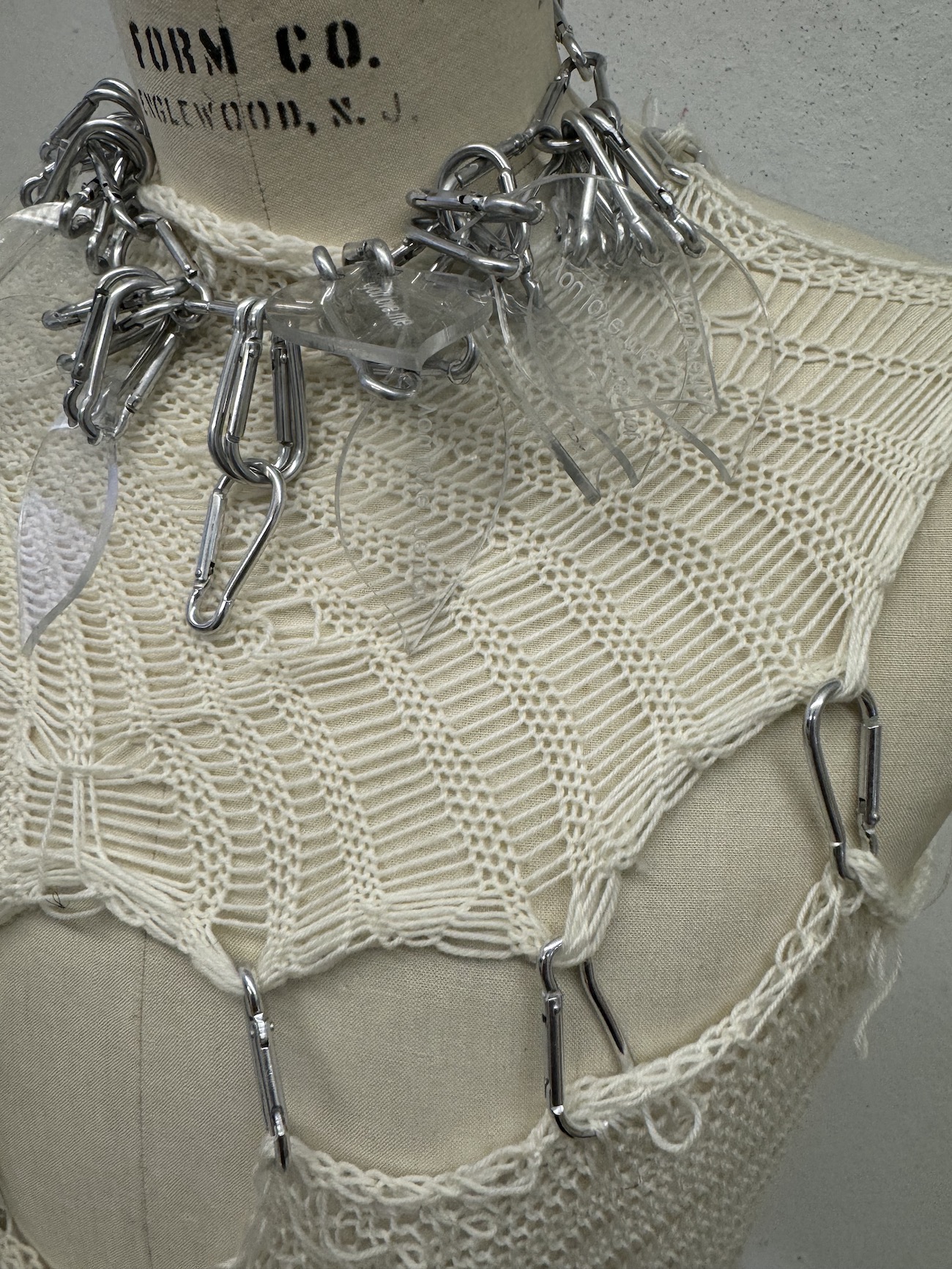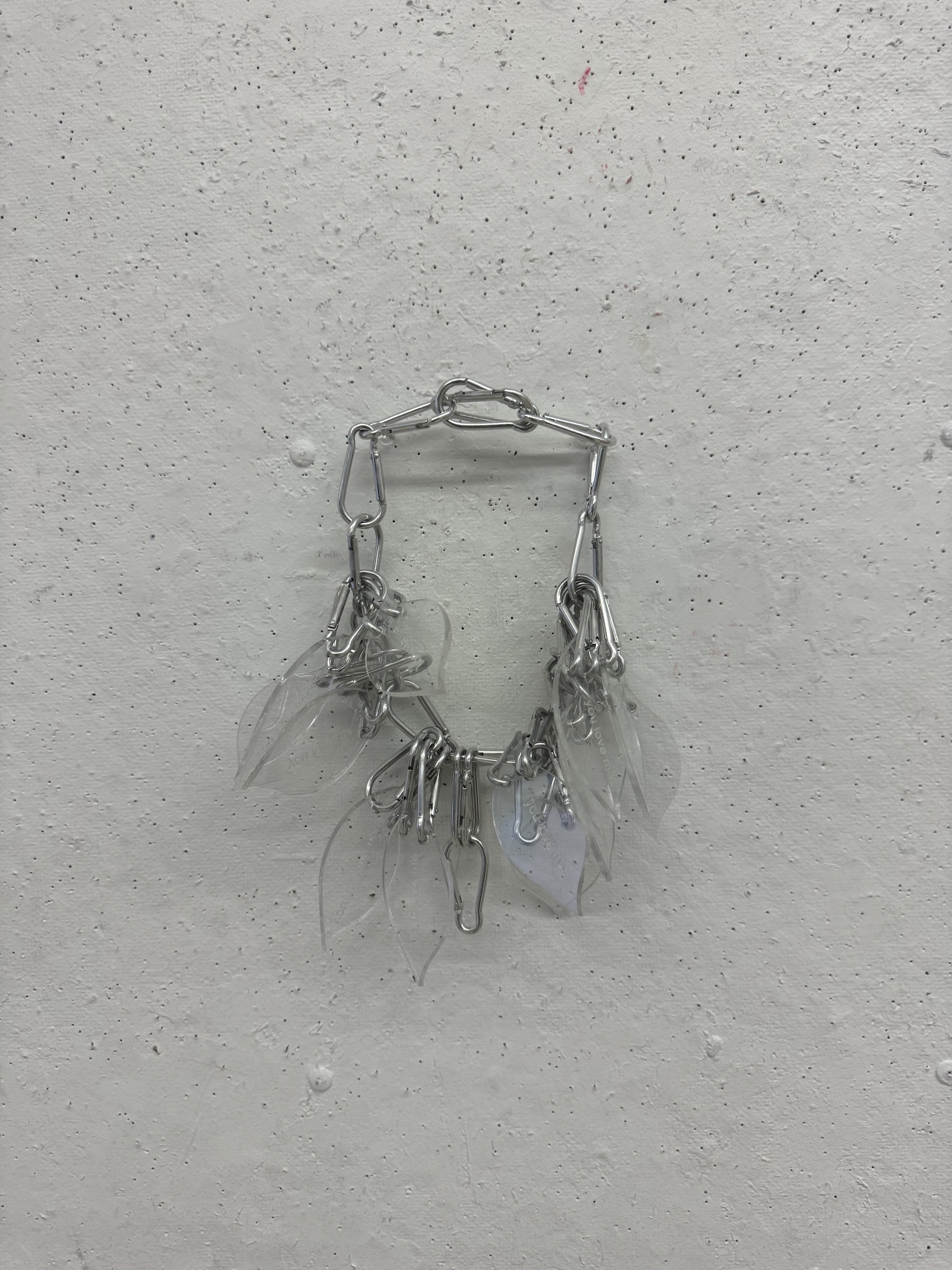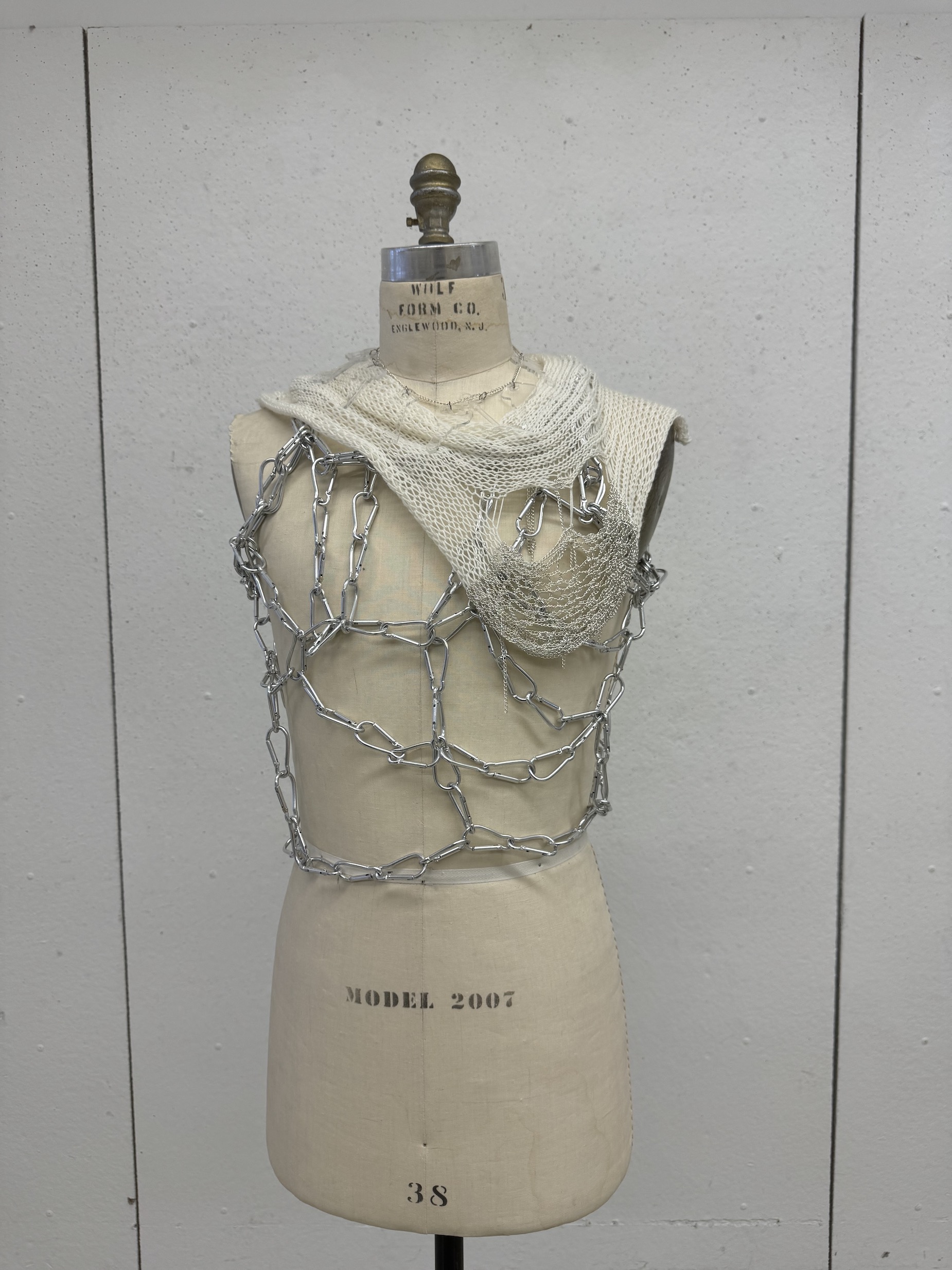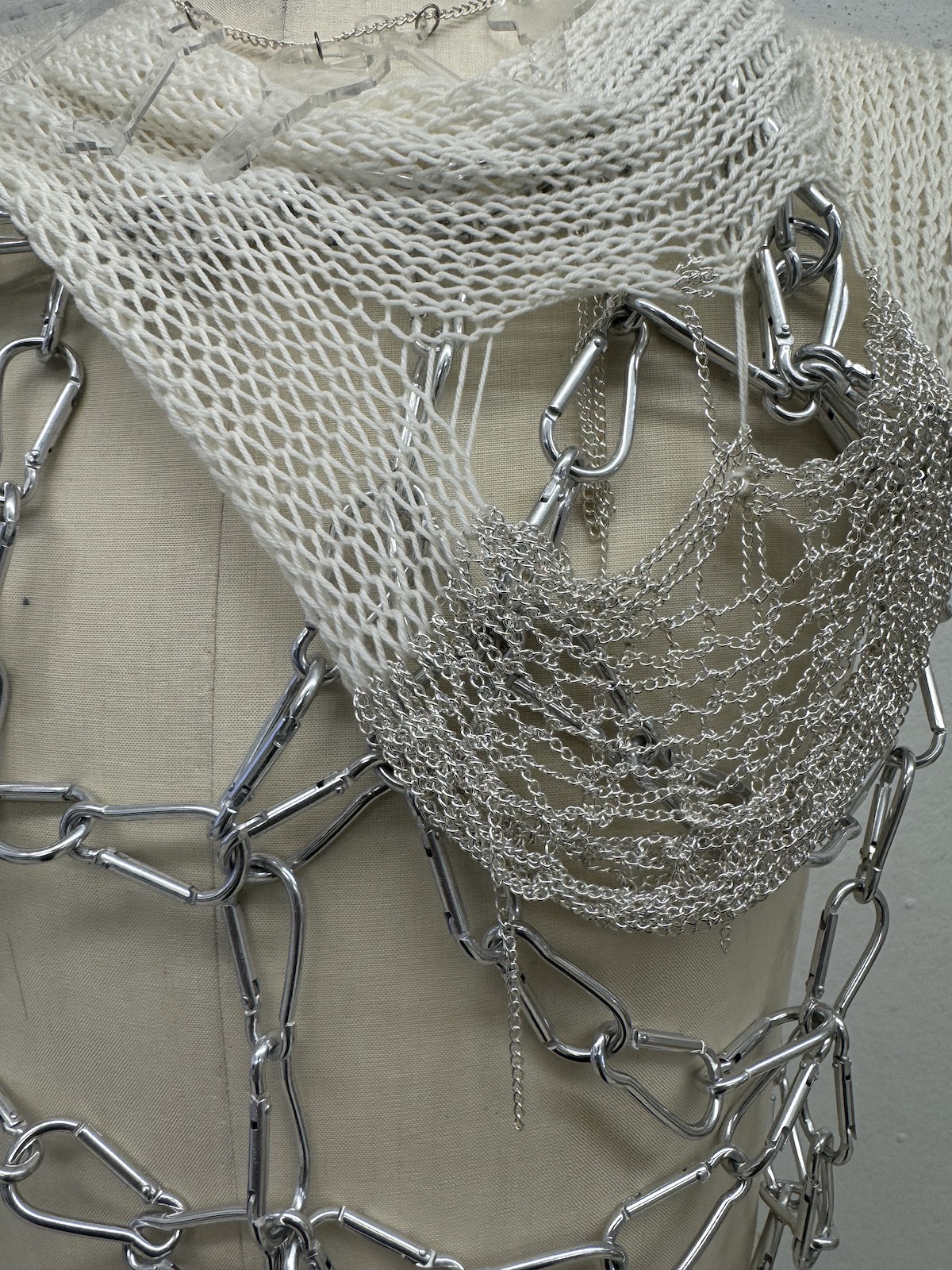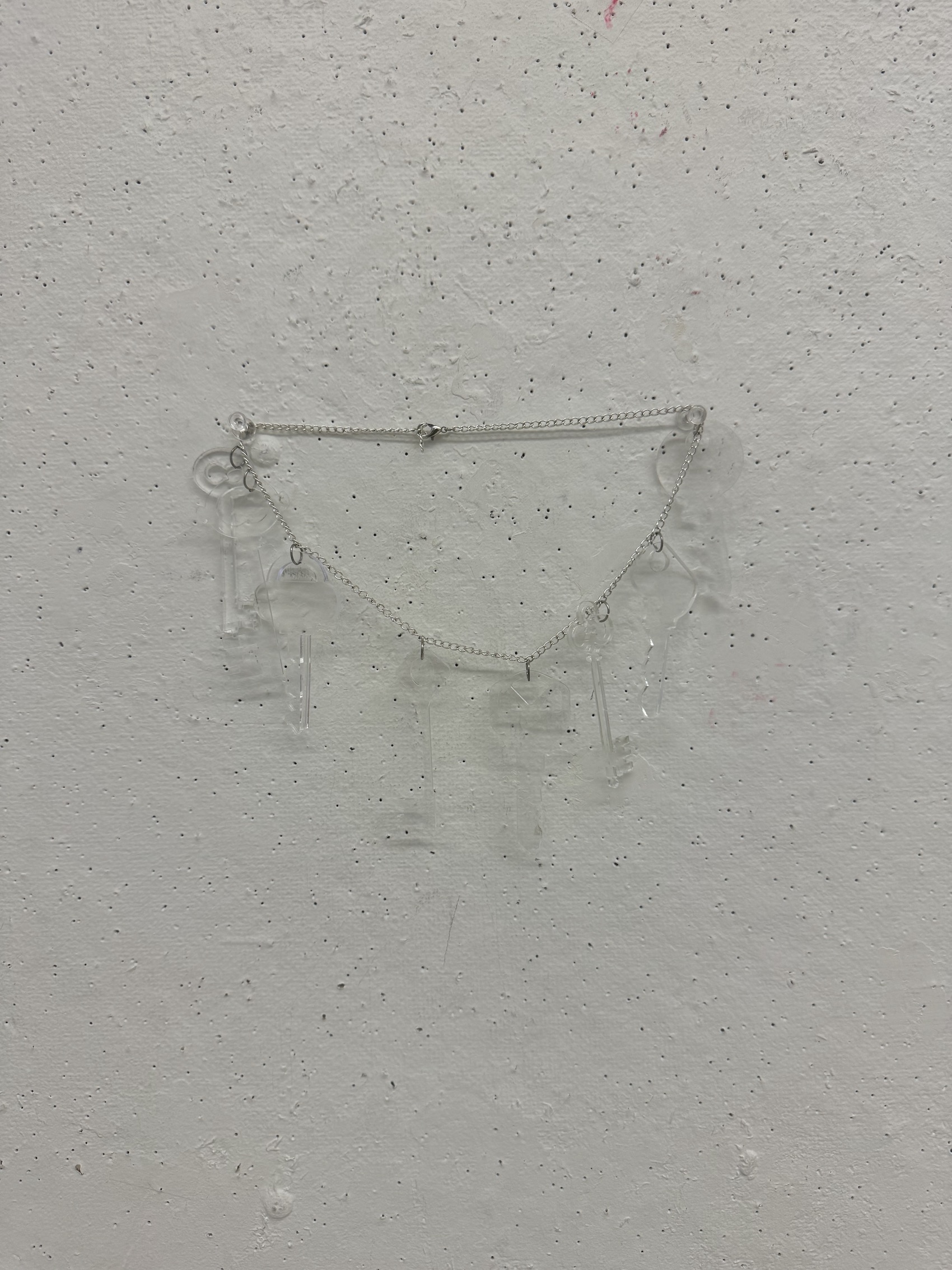This is the first part of what will be a 22 look garment and song collection inspired by a fictional nightclub for queer neo-roman warriors. Existing during an era of extreme surveillance, where even language is enforced by the Imperial government, the Club New Sparta becomes a haven, where even enemies can dance together and let their armor melt away. To skirt past regulations and share the music that they truly wanted to listen to, many people started to create “sono-garments”, which were pieces of clothing that could be worn to the club normally but would stream music directly to someone’s neural implant when scanned. Secret messages, love songs, and black market tracks from the most popular artists were shared through this clandestine method. Years after the end of the Revolutionary War, a University that had been collecting these forgotten pieces of history puts on an exhibit showcasing their archive.
In the far far future, at the Vasquez Museum of Art and Culture at Fjolner University on the planet Bavaria, an exhibition is held in commemoration of the Club New Sparta. This queer night club, located on a satellite orbiting not too far from the University’s campus, started out as a place where off duty warriors, college students, and intergalactic travelers could escape the oppression of the Empire and enjoy a night of fun and relative freedom. Over time though, the club secretly became the birthplace of the rebellion.
During the oppressive regime of the former Empire all forms of culture were heavily regulated including the language that people could speak. Only one language, Imperial Amalgam, was permitted to be spoken aloud. Due to this, subcultures across the galaxy developed many different nonverbal ways of communication. At the Club New Sparta this manifested in multiple ways. The method that is mainly mentioned in most texts written about the subject is that the melodies of the songs that were played at the club, rather than the lyrics were used to disseminate messaging about meeting times and places for revolutionary demonstrations. The second, which is not as well known, was that there was a black market of music being shared through the clothing that people wore when they went out. These “sono-garments”, designed to look like the typical clothing that people would normally wear out during the era, would stream an audio file directly to someone’s neural implant when scanned and decoded. Many of these songs were love songs shared between individual people who were kept from showing their love in public. Others were illegal hits that the community wanted to hear but were too provocative to evade imperial censorship. The exhibit features a collection of sono-garments that have been found over the years by the Fjolner University, Choudhry Fashion and Textile Archive. Unfortunately, during the war, many of these pieces were either damaged or completely destroyed, but the University was able to locate many of the remaining pieces and now holds the largest collection of them left in the world.
This project is still a work in progress. The eventual goal is to have 22 of these sono-garments each with a pairing of a song and a look. The three songs that I submitted also still need to be mixed and will be rerecorded this summer when I have access to a studio that isn’t my bedroom and iPhone.
The completed installation for this work will include the creation of a fake gallery within a real gallery setting. This fake gallery, the Vasquez Museum of Art and Culture will act as the curatorial entity behind the exhibit. These pieces are meant to be seen out of their original context. Instead of being engaged with in a club like setting they are intentionally meant to be in a museum. Many of these pieces are from really intimate moments shared between individuals, but over time they become just like many other pieces of physical history, a stagnant member of an institutional archive. For the actual installation, guests will be given headphones to use as they travel through the space. Each garment is scannable using NFC tag technology, and so by using their super high tech sci fi scanning devices (phones) they will get access to each song.
The collection will be broken up into multiple different factions that frequented the Club New Sparta. This first group of three are members of the Imperial Guard. While the Club New Sparta was under constant surveillance, many of the guards that were stationed there were actually active members of the community. Over time they softened to the nightlife scene and in response the community opened themselves up to them. There are multiple accounts of Imperial Guards finding love at the Club New Sparta and joining the revolutionary cause in response. Their access to the local Imperial Space Port was pivotal to the eventual first strike against the empire. Once the war began, many of them were conscripted into the military against their will. Of them, almost every soldier from the Fjolner region defected.
Over the course of this last semester I have really developed an understanding of how I work, and how I want my professional art practice to look. I am interested in many different forms of art making but at the end of the day what I enjoy most is being able to tell stories through my work. Since I started at SAIC I have been researching and outlining a Science Fiction Fantasy series that spans five books. The Club New Sparta is a setting in one of these books. I want to supplement not only that series but all future stories I write with artifacts, music, sculptures, clothing, paintings, news articles, food and many other items that can help to transport the viewer into another world.
Two of my academic classes actually helped me immensely during the research for this project. This semester I was lucky to take both Vanda Rajcan’s Propaganda: The History of Lies and Mistruths class as well as Oliver Shao’s Music, Migration and Identity course. From both of these classes I began to understand that in spite of all odds, in spite of overwhelming political power, restrictive local and federal governments and alienation from others, art will always be made. Culture will always prevail. Even in the most restrictive environments people will find ways to create. As I continue writing this series I want that to be a driving force.
Thank you for taking the time to look at my work, and read through this long explanation if you did. And remember:
The stories are there if you choose to look for them.
– MECHAlily
